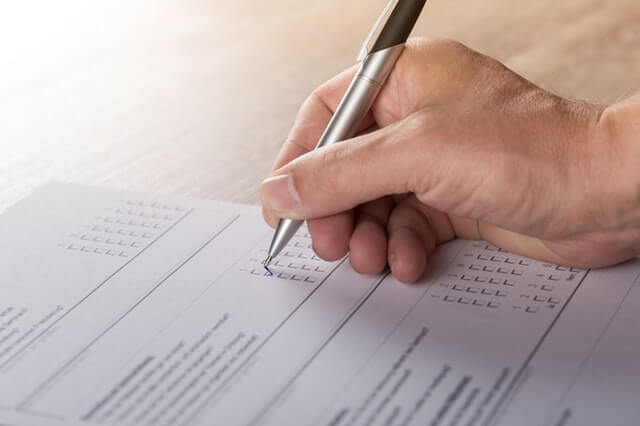Test Preparation
General Test Taking Guidelines

The following information is essential if you are required to complete an examination in person at the University/Agency where you applied. If the classification is a Credentials Assessment examination, the following information does not apply.
Read all exam directions and instructions carefully:
- Never assume you know what the directions say.
- Listen closely to any verbal instructions.
- Make sure you carefully read and follow all directions and any special instructions for the exam.
- Make sure you understand the instructions before answering the questions.
If you are completing a paper/pencil exam:
- Ensure you answer the test questions in the proper test booklets.
- Do not mark more than one answer for each question on a multiple-choice exam.
- Refer to your exam materials for information on which exam booklets and problems
you are to answer.
- Please note: Not all examinations require exam booklets or special instructions.
- Make sure the choice you mark on your answer sheet matches the question you are
answering in the test booklet:
- Mark your answer sheet carefully and make sure your marks completely fill the spaces.
- Make sure you record all your answers on the answer sheet; fill in the circles for your choices, completely and carefully.
- Avoid making stray pencil marks on your answer sheet. The scanning machine may interpret
these marks to be your answers.
If you are completing an exam in E-Test:
- Select your answer on the computer.
- If you are unsure of an answer, skip the question. You will have the opportunity to review all questions at the end of the exam if time permits.
Budget your time wisely:
- Use all the time allotted for the exam, if you have extra time, cover up your answers
and rework the problem.
- Budget your time so that you will be able to complete the entire exam.
- Try to save time to review your answers before submitting your exam.
- Allow time to check problems.
- Use allotted time wisely. Make every effort to pace yourself so you can have a
chance to answer every problem within the time limit.
Read each problem carefully:
- Read over all of your options.
- Re-read problems.
- Eliminate highly unlikely answers.
- Read each problem carefully and thoroughly. Before answering the problem, determine
exactly what is being asked. Do not select the first answer you come to that seems
to make sense. It may seem to fit, but you are looking for the best answer.
- Never skim a question for possible answers as you may miss important information.
Be alert to key words that you must consider to answer the question correctly:
- This will allow you to focus on the central point
Break large problems into more manageable parts and analyze each part:
- Breaking a problem down can make it clear to you, but be sure you do not change
the meaning of the problem
- Break into smaller parts
- Go back and work on hard problems
Use a process of elimination, if you are not sure about the answer to a question:
- Take the problems in order but do not spend a lot of time pondering over those you are unfamiliar with. A good practice is first to answer the questions you are sure of, then, if you complete the exam before time has ended, reconsider those about which you were uncertain.
Guess if you do not know the answer to a question:
- Do not linger too long on one question. Mark your best guess and move on, returning later if you have enough time.
- If you make a straight guess at a multiple-choice answer, you have a one-in-four chance of getting it right; if you eliminate one option, you have a one-in-three chance of getting it right.